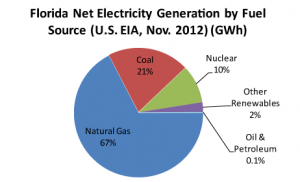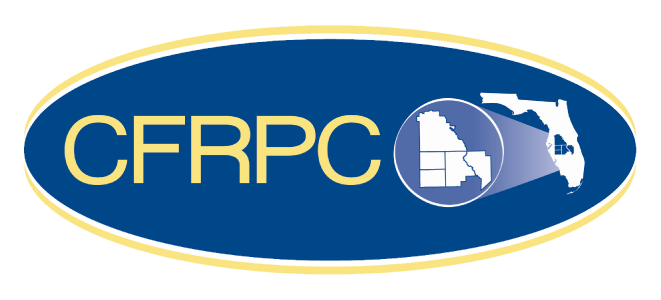Energy Baseline Inventory
The Energy Baseline Inventory is a comprehensive energy usage and greenhouse gas emissions inventory for a six county region (DeSoto, Glades, Hardee, Hendry, Highlands, and Okeechobee Counties). The inventory will measure baseline energy consumption and greenhouse gas emissions from the residential, commercial, industrial, and institutional/government sectors across four main categories: electricity, natural gas, transportation fuels, and solid waste. The Inventory will establish a measurement of the baseline carbon, energy, and greenhouse gas footprint for the region, and will enable benchmarking of the effectiveness of potential future strategies, policies, and programs. To date, this is the most in-depth energy and greenhouse gas inventory of this scope in the state. The Florida Heartland Energy Baseline and Greenhouse Gas Inventory is still in draft form, and will be finalized within the next six months.
Florida Energy Assurance Study
The Energy Assurance Strategies report is a joint study that involves all 11 Regional Planning Councils in the state, and is funded by the Florida Office of Energy (housed in the Florida Department of Agriculture and Consumer Services). It will determine and model the economic impacts of a disruption or shortage in energy supply, as might happen after a disaster event. Model strategies were developed to enhance statewide energy assurance. In addition, case studies were gathered from across the state of projects or organizations that are enhancing their own energy assurance. The ultimate goal of this project is to increase statewide energy assurance following energy supply disruptions.
Florida Energy Resiliency Strategies Study
The Energy Resiliency Strategies project is a joint study that involves all 11 Regional Planning Councils in the state, and is funded by the U.S. Economic Development Administration. It will determine and model the economic impacts of a disruption in energy supply or prices to businesses and communities. In addition, a statistically-significant survey was conducted to determine Floridians’ ability to recover and cope with potential increases in energy prices (electricity and petroleum), as well as their opinions and attitudes regarding energy in Florida. Regional, statewide energy summits were also held, where subject-are speakers shared industry expertise and stakeholder input was gathered on issues like local opportunities, strengths, weaknesses, and challenges, potential local strategies to enhance energy resiliency, potential local synergies, and local happenings in the energy sector. This project also includes the development of regionally-customized, alternative energy industry economic modeling templates to facilitate the forecasting of impacts due to new industry creation and/or relocation. The ultimate goal of this project is to increase the economic and energy resiliency of Florida businesses and residents to increases in energy prices, and to enhance state energy security.

Alternative Fuels Economic Development Strategy
The Alternative Fuels Economic Development Strategies analysis will help determine which strategies are appropriate to encourage clusters for alternative energy-related industries. The strategies for developing these industries will capitalize on some of the Heartland region’s unique strengths: large tracts of land, a strong agricultural tradition, solar access, and a year-round growing season. This effort is also being coordinated with a U.S. Dept. of Energy grant and the Hendry County Sustainable Biofuels Center, which will determine which particular crops and soils in the Heartland are best suited for energy crop production.The Alternative Fuels Economic Development Strategy scope of work is still in the developmental phases.
